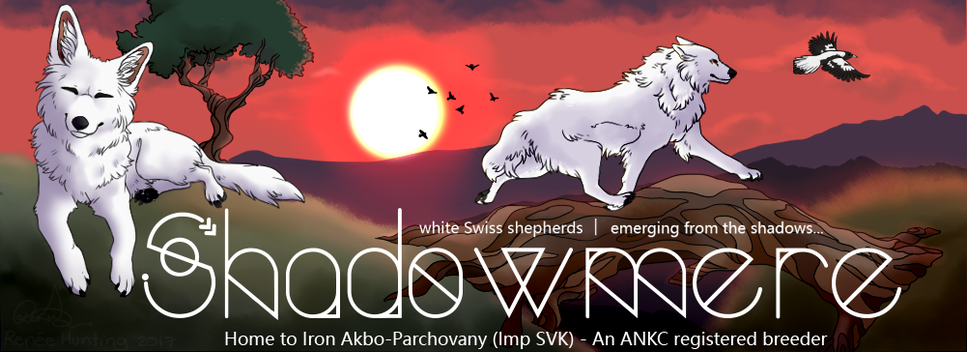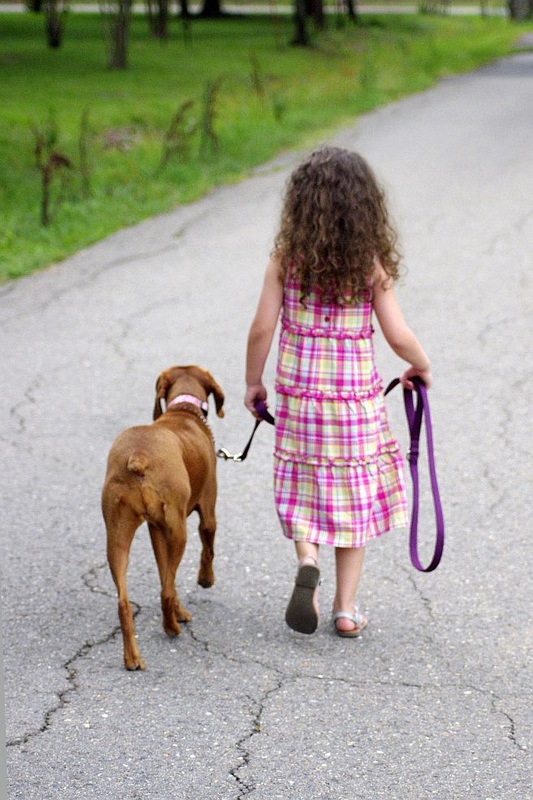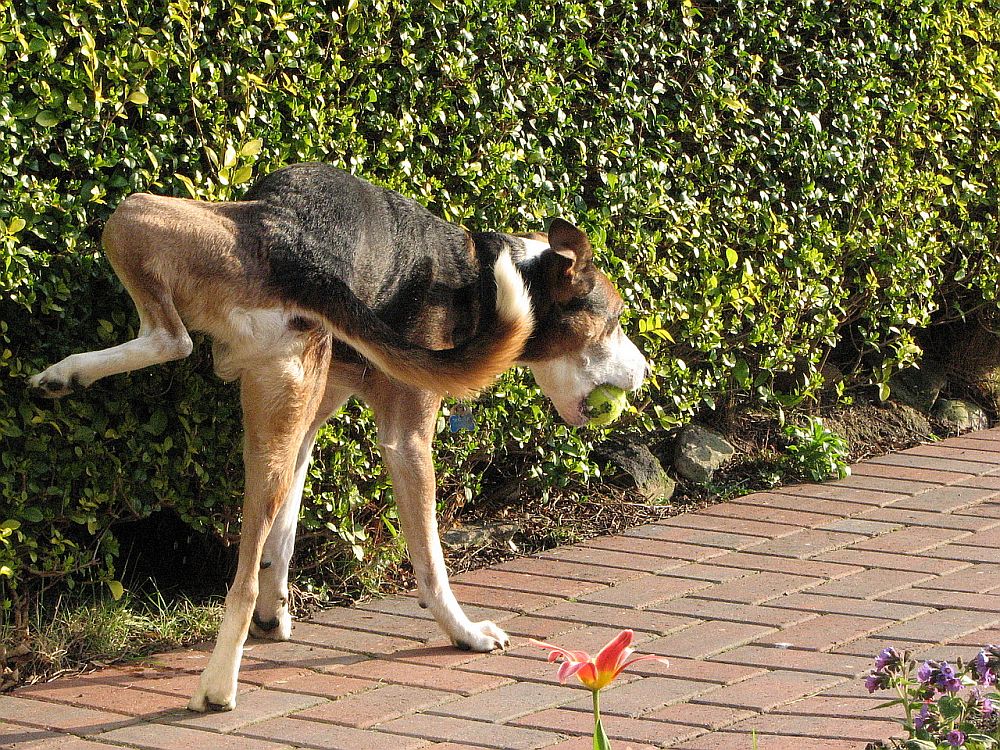© kym dunbar - Soul Wolf Journey™
You are excited with the new addition to your family and cannot wait to take puppy for a walk. That is great but you need to leash train puppy first or you can end up with all sorts of problems. Puppy does not come automatically trained so you need to teach it what you expect, and how to wear a collar and lead before you go anywhere.
What you teach puppy now sets its behaviour for the rest of its life. There is nothing worse than a dog that walks you that you need to continually hang on to and pull back.
While puppies may seem they play for hours and hours, in fact they often fall asleep in the middle of what they are doing. Walking a puppy is not necessary until they are older other than to socialise and get them used to being out in the world. Do not walk puppy for more than 15 minutes at a time.
Puppies naturally follow their leader until around 8 months old. When puppy comes to live with you, you replace its mother as its new pack leader. Puppies are raised with their mother’s calm assertive energy. If you continue using this energy, puppy will soon follow you around naturally.
This is what you want when you are out in public, but puppy needs to be on a leash. Apart from the laws prohibiting walking a dog in public without one, there are far too many distractions for a puppy to stay safe if not under control.
The best way to train puppy is right from when it comes home as a natural progression and part of puppy’s every day. Make it a positive experience and it will strengthen the bond between you.
Step 1
Start with getting puppy used to a collar. Some breeders may have already done this. Put a lightweight collar on your pup when playing and at meal times to get it used to wearing it around its neck.
Puppy may not like this and try to remove it. Do not remove it but wait for puppy to settle down. You can use a toy or treat as a distraction and reward. Do this a few times a day for very short periods and gradually build up how long puppy wears a collar.
Step 2
Once puppy is used to the new collar it is time to introduce the leash. Use the same technique to familiarise puppy with a new distraction by attaching a light leash to puppy’s collar. Let puppy check it out. Even let the lead drag along as puppy plays. Make sure you supervise and puppy will soon learn not to fear it, and forget it is there.
Step 3
Once puppy is comfortable with the lead, pick it up and walk around the house. Make these training sessions short and fun. Your puppy probably loves to follow you anyway so build on that. Remember to praise when puppy walks nicely beside you.
When puppy accepts this nicely you are ready to take puppy for short walks. Keep the excitement level low and wait for puppy to be clam before leaving the house. And you should always walk through doors and gates before your dog.
Avoid allowing puppy to walk or pull out in front as you walk. If this happens, stop and call puppy back to you. Give lavish praise when puppy comes. Do not keep walking as this teaches puppy it is alright to pull you down the street.
Same thing if puppy becomes distracted by another dog. Stop. Wait for calm behaviour. Even put puppy onto a sit and only walk off once puppy calms down.
Remember
Whatever you feel transfers down the leash to your dog. If you are nervous it will make your dog nervous. Always walk with confidence, even if you do not feel it, and always praise your pup to reinforce good behaviour.
Giving freedom to sniff around can be a great reward for your pup for walking nicely on its leash.
Teaching your puppy to walk on a leash is a lifetime asset, and strengthens the bond and trust between you.
You are excited with the new addition to your family and cannot wait to take puppy for a walk. That is great but you need to leash train puppy first or you can end up with all sorts of problems. Puppy does not come automatically trained so you need to teach it what you expect, and how to wear a collar and lead before you go anywhere.
What you teach puppy now sets its behaviour for the rest of its life. There is nothing worse than a dog that walks you that you need to continually hang on to and pull back.
While puppies may seem they play for hours and hours, in fact they often fall asleep in the middle of what they are doing. Walking a puppy is not necessary until they are older other than to socialise and get them used to being out in the world. Do not walk puppy for more than 15 minutes at a time.
Puppies naturally follow their leader until around 8 months old. When puppy comes to live with you, you replace its mother as its new pack leader. Puppies are raised with their mother’s calm assertive energy. If you continue using this energy, puppy will soon follow you around naturally.
This is what you want when you are out in public, but puppy needs to be on a leash. Apart from the laws prohibiting walking a dog in public without one, there are far too many distractions for a puppy to stay safe if not under control.
The best way to train puppy is right from when it comes home as a natural progression and part of puppy’s every day. Make it a positive experience and it will strengthen the bond between you.
Step 1
Start with getting puppy used to a collar. Some breeders may have already done this. Put a lightweight collar on your pup when playing and at meal times to get it used to wearing it around its neck.
Puppy may not like this and try to remove it. Do not remove it but wait for puppy to settle down. You can use a toy or treat as a distraction and reward. Do this a few times a day for very short periods and gradually build up how long puppy wears a collar.
Step 2
Once puppy is used to the new collar it is time to introduce the leash. Use the same technique to familiarise puppy with a new distraction by attaching a light leash to puppy’s collar. Let puppy check it out. Even let the lead drag along as puppy plays. Make sure you supervise and puppy will soon learn not to fear it, and forget it is there.
Step 3
Once puppy is comfortable with the lead, pick it up and walk around the house. Make these training sessions short and fun. Your puppy probably loves to follow you anyway so build on that. Remember to praise when puppy walks nicely beside you.
When puppy accepts this nicely you are ready to take puppy for short walks. Keep the excitement level low and wait for puppy to be clam before leaving the house. And you should always walk through doors and gates before your dog.
Avoid allowing puppy to walk or pull out in front as you walk. If this happens, stop and call puppy back to you. Give lavish praise when puppy comes. Do not keep walking as this teaches puppy it is alright to pull you down the street.
Same thing if puppy becomes distracted by another dog. Stop. Wait for calm behaviour. Even put puppy onto a sit and only walk off once puppy calms down.
Remember
Whatever you feel transfers down the leash to your dog. If you are nervous it will make your dog nervous. Always walk with confidence, even if you do not feel it, and always praise your pup to reinforce good behaviour.
Giving freedom to sniff around can be a great reward for your pup for walking nicely on its leash.
Teaching your puppy to walk on a leash is a lifetime asset, and strengthens the bond and trust between you.



 RSS Feed
RSS Feed
